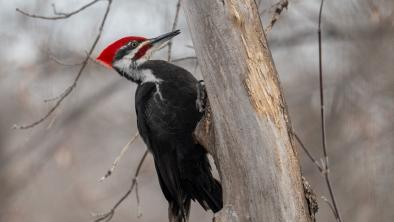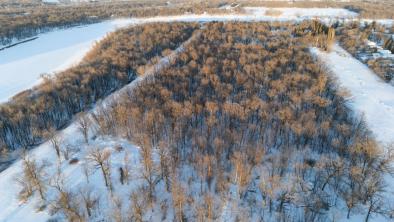Manitoba protects First Nation's territory
CBC News

More than 800 square kilometres of boreal forest and wetlands on the east side of Lake Winnipeg have been designated as protected territory of the Poplar River First Nation, the Manitoba government announced Thursday.
"We have committed to protecting this area for future generations and bringing into law the management plan the Poplar River First Nation has developed," Conservation Minister Bill Blaikie said in a news release. "We will continue to work with them to implement the plan for the Asatiwisipe Aki area and look forward to including it as part of the UNESCO World Heritage Site bid."
The First Nation, located approximately 400 kilometres north of Winnipeg on the east side of Lake Winnipeg, is the first community in Manitoba to proceed with land-use planning and submit a management plan for approval under the East Side Traditional Lands Planning and Special Protected Areas Act, Blaikie said.
The province has legally designated the planning area and approved the community's plan, ensuring the Poplar River First Nation assumes a significant role in developing and implementing strategies for the use, management and sustainable development of the First Nation's traditional area, Blaikie said.
"The Asatiwisipe Aki Management Plan protects the traditional land [of the Poplar River Anishinabek] from industrial developments, sustaining natural ecological processes for present and future generations," Aboriginal and Northern Affairs Minister Eric Robinson said.
The plan incorporates traditional knowledge, elders' oral histories, traditional land and resource uses, and mapping and scientific data relating to climate, geology, vegetation, fish and wildlife. The rights of First Nations and aboriginal communities to access the area for hunting, fishing, trapping and other traditional pursuits will be respected and continue.
Manitoba will support implementation of the plan, Blaikie said.
Poplar River's land management plan will be part of the UNESCO World Heritage Site bid that will be formally submitted in 2012. The land-management plans of the Bloodvein, Pauingassi and Little Grand Rapids First Nations, two provincial parks and one First Nation in Ontario will also form part of the UNESCO bid, the province said.
Provincial conservation groups are elated.
"This is momentous," said Eric Reder, Manitoba campaign director for the Wilderness Committee, said in a news release. "The future of the greatest forest left on the planet is more secure, while the desires of the local First Nation community are being supported. The Manitoba government got it right, and the Wilderness Committee and its thousands of members couldn't be happier."
With this action, the Manitoba government has combined protection of one of the world's most important ecosystems with support for a local, community-led initiative. This announcement demonstrates a 'think global, act local' success, the group said.
"This is tremendous news, and important on so many levels," Reder said. "It is the first traditional territory in the Heart of the Boreal to be permanently protected from development. It is one of the first Park Reserves nominated for protection by First Nations communities—most over a decade ago—to receive permanent protection."
"It is also the first permanently protected land under the new East Side Traditional Lands Planning and Special Protected Areas Act, introduced in 2008," Reder added. "It is the first major permanently protected area in the Heart of the boreal since the Manigotagan River Provincial Park was created in 2004, and it is now one of Manitoba's largest protected areas at 800,000 hectares."
Photo: Conservation Minister Bill Blaikie says the land agreement reached with the Poplar River First Nation is the first under the East Side Traditional Lands Planning and Special Protected Areas Act. (CBC)


